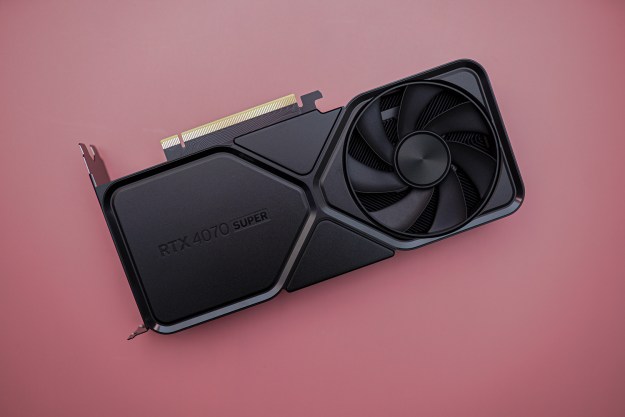Ahead of the launch of the oft-rumored GeForce RTX 3080 graphics card, Nvidia has started a countdown clock on its social media page. A mysterious Twitter post by Nvidia references the #UltimateCountdown alongside text that reads “21 days. 21 years.” The Twitter post also contains an image of a supernova, which could suggest that the company has a big surprise in store. The 21 days reference indicates that the timing of Nvidia’s announcement could occur on August 31. The 21 years could be an homage to Nvidia’s first modern graphics card, the GeForce 256, which debuted in 1999.
Interestingly, according to Wccftech, if you multiple the 256 by 21, you’ll get 5,376, which is the same number as the RTX 3080’s core count. Even though the RTX 3080 graphics card was not mentioned in Nvidia’s Twitter post, it’s believed that Nvidia’s message references the launch of its next-generation graphics card based on the same Ampere graphics architecture that debuted earlier this year.
Ampere essentially succeeds the Turing architecture that debuted on the RTX 2080 graphics card. The next-generation Ampere architecture made its debut on the DGX A100 scalable graphics for data centers earlier this year, and Nvidia claimed that the data center edition can reach up to 5 petaflops of computing power.
…#UltimateCountdown pic.twitter.com/f23HcbHUk6
— NVIDIA GeForce (@NVIDIAGeForce) August 10, 2020
For gamers and creatives looking to adopt Ampere at home and at work on consumer graphics, the GeForce RTX 3080 is expected to come with more power and better performance than the RTX 2080. This uplift in performance will help the RTX 3080 deliver smoother performance on real-time ray tracing — a feature that debuted on consumer GPUs for the first time with the RTX 2080 — when playing games at higher resolutions and with higher settings. Details of the RTX 3080 graphics card have leaked extensively in recent months, including the card’s design and early benchmarks confirming the improved performance.
The August 31 date implied in Nvidia’s social media post matches the card’s expected fall launch, though it’s still unclear if the entire RTX 3000 series lineup will be available at once. In the past, it’s been speculated that the high-end cards may debut first, and the company could use a staggered launch approach to subsequently debut the midrange and entry-level cards at a later date.
Editors' Recommendations
- Nvidia could flip the script on the RTX 5090
- The RTX 4090 is more popular on Steam than any AMD GPU
- Nvidia RTX 50-series graphics cards: news, release date, price, and more
- You shouldn’t buy these Nvidia GPUs right now
- The RTX 4090 is past its prime, and that’s OK



